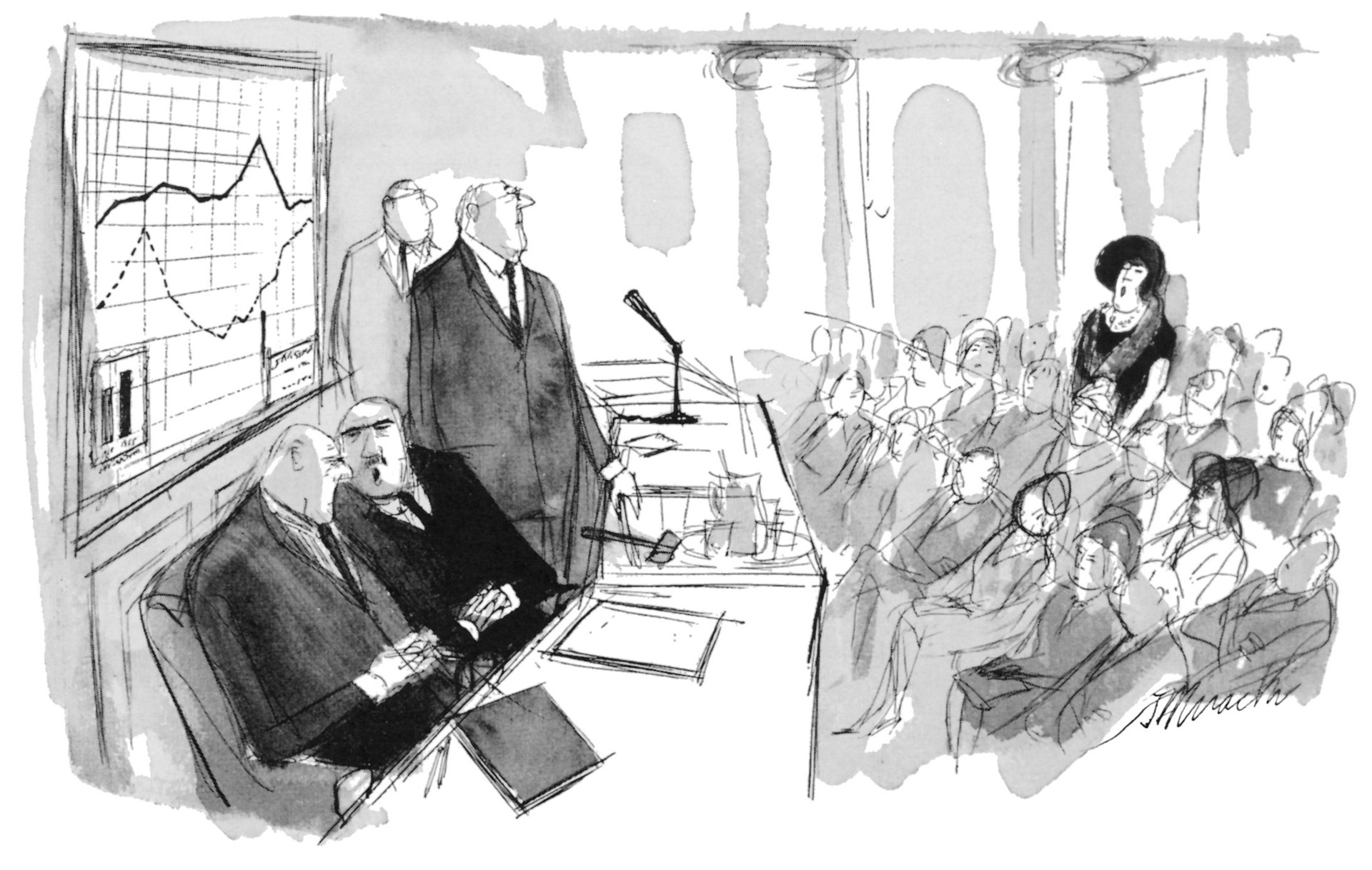Conventional wisdom holds that the primary function of the stock market is to raise cash that companies use to invest in productive capabilities. The conventional wisdom is wrong. Academic research on corporate finance shows that, compared with other sources of funds, stock markets in advanced countries have in fact been insignificant suppliers of capital to corporations. What, then, is their function? If we are to understand employment opportunity, income distribution, and productivity growth, we need an accurate analysis of the role of the stock market in the corporate economy.
The insignificance of the stock market as a source of real investment capital exposes as fallacious the fundamental assumptions of the prevailing ideology that, for the sake of economic efficiency, a business corporation should be run to “maximize shareholder value” (MSV). As a rule, public shareholders do not invest in a corporation’s productive capabilities; they simply buy shares outstanding on the market, hoping to extract value that they have played no role in helping to create. And in practice, MSV advocates modes of corporate resource allocation that undermine innovative enterprise and result in unstable employment, inequitable incomes, and sagging productivity.
The most obvious manifestations of the corporate misbehavior that MSV incentivizes are the lavish, stock-based incomes of top corporate executives and the massive distributions of corporate cash to shareholders in the form of stock buybacks, coming on top of already-ample dividends. Indeed, with stock-based pay incentivizing senior executives to do stock buybacks—i.e., having a company repurchase its own shares to give manipulative boosts to its stock price—over the past three decades the stock market has had a negative cash function. On the whole, U.S. business corporations fund the stock market, not vice versa.
My INET paper, “The Functions of the Stock Market and the Fallacies of Shareholder Value,” provides an analysis of the evolving role of the stock market in the U.S. corporate economy over the past century. I ask how the changing functions of the stock market have influenced the processes of value creation (hence, the size of the economic pie), as well as the relation between value creation and value extraction (hence, the distribution of the economic pie). This essay is part of an ongoing project aimed at making “The Theory of Innovative Enterprise” central to an economic analysis that comprehends institutions’ and organizations’ roles in supporting or undermining stable and equitable economic growth.
The Theory of Innovative Enterprise posits that three social conditions of innovative enterprise—strategic control, organizational integration, and financial commitment—determine whether a business can generate goods and services that are higher quality and lower cost than those previously available. The process of value creation enabled by innovative enterprise enhances the performance of both the company and the economy of which it is a part. Once armed with a theory of innovative enterprise, we can analyze the relation between those who contribute to the processes of value creation and those who reap incomes through value extraction. We can discern how “predatory value extractors,” who make little if any contribution to value creation, use their power to dominate the distribution of income.
In terms of the three social conditions of innovative enterprise: Strategic control gives decision makers the power to allocate the firm’s resources to transform technologies and access new markets to generate higher-quality, lower-cost products; organizational integration creates incentives for people working together to engage in the collective learning that is the essence of the value-creation process; financial commitment secures funds to sustain the cumulative learning process, from the time when investments in productive capabilities are made until innovative products generate financial returns.
The functions of the stock market may support or undermine the social conditions of innovative enterprise. The functions of the stock market go well beyond “cash” to include four others, which can be summarized as “control,” “creation,” “combination,” and “compensation.” Historically, as the U.S. economy grew to become the world’s largest and most powerful, the key function of the stock market was control. Specifically, the stock market enabled the separation of managerial control over the allocation of corporate resources from the ownership of the shares in the company.
Yet, assuming that the key function of the stock market is cash, academic economists known as agency theorists see this separation of control from ownership as the “original sin” of American capitalism. They argue that the evils of managerial control can be overcome by incentivizing or, if necessary, compelling corporate managers as “agents” to maximize the value of the stock possessed by corporate shareholders as “principals.” The agency-theory mantra is that the key role of managers is to “disgorge” the “free” cash flow to shareholders in the forms of dividends and buybacks.
What is missing from the agency theory argument is a theory of how a firm creates value—that is, a theory of innovative enterprise. The functions of the stock market may support the types of strategic control, organizational integration, and financial commitment that can result in the generation of higher quality products at lower unit costs—the economic definition of innovation. It is possible, however, that the functions of the stock market may undermine the types of strategic control, organizational integration, and financial commitment that the innovation process requires.
Indeed, by following the prescriptions of agency theory—that senior executives should be incentivized by stock-based pay to “create value” for shareholders—corporate managers have undermined the conditions of innovative enterprise in U.S. corporations over the past three decades. Consider each of the three social conditions:
Strategic control: Senior executives who are willing to waste hundreds of millions or billions of dollars annually on buybacks to manipulate their companies’ stock prices can lose the capacity to determine what types of organizational and technological investments are required to remain innovative in their industries. Instead, the current structure of stock-based executive remuneration—as prescribed by agency theory—creates incentives for senior executives to allocate resources in ways that boost stock prices and increase their take-home pay. The stock buyback is a powerful tool at the disposal of corporate executives for manipulating the stock market for their personal gain.
Organizational integration: Collective and cumulative learning about the technologies, markets, and competitors relevant to a particular industry is the foundation for generating the higher-quality, lower-cost goods and services that result in productivity growth. What I call “collective and cumulative careers” are essential for organizational learning, especially in industries that are technologically and organizationally complex. Organizational learning depends on a “retain-and-reinvest” regime. In such an arrangement, senior executives make corporate resource-allocation decisions that, by retaining people and profits in the company, permit reinvestment in the productive capabilities that can generate competitive (high-quality, low-cost) products. Our research supports the hypothesis that, as part of a corporate resource-allocation regime that downsizes the U.S. labor force and distributes corporate cash to shareholders, stock buybacks are done at the expense of investments in collective and cumulative careers. For working people who are the real value creators, the “disgorged” cash flow is far from “free.”
Financial commitment: The cash flow that MSV calls “free” can deprive the business enterprise of the foundational finance for investment in innovative enterprise. Stock buybacks represent a depletion of internally-controlled finance that could be used to support investment in the company’s productive capabilities. Every once in a while, a major company that has done massive buybacks over a period of years hits a financial wall. At that point the billions of dollars it wasted on buybacks are not available to support the restructuring needed for it to become innovative once again. The process of predatory value extraction that destroys innovative enterprise is irreversible. It must be stopped before it starts.







